My 182 was initially equipped with resistive fuel senders (Rochester) as they can be found on old Ford. Resistive fuel senders work pretty well, but they get old early. They stay in 100LL all the time, and the resistive circuit, in the end, loose precision. You end up with a non-perfect signal, which in my case, turns into signal lost (red crosses) on the G1000. Analog gauges work probably better with them, in order to filter out noisy informations, where the G1000 diagnosises loss of integrity.
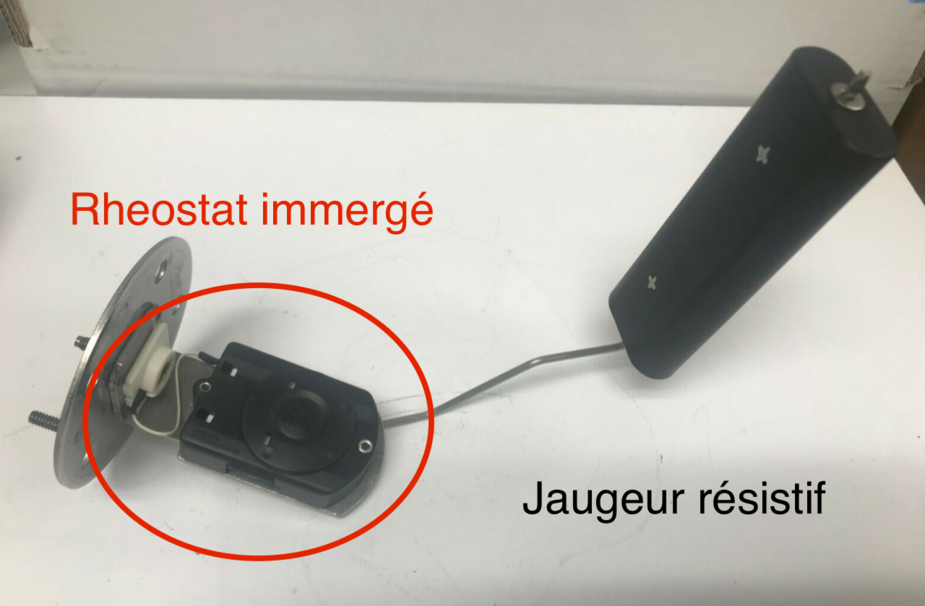
There is not much to do to improve. In a very complete ICA, Cessna suggests a few tricks to improve contacts.
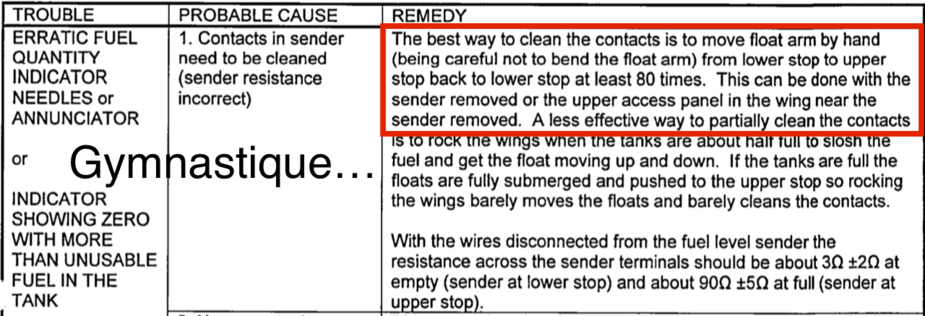
I’ve also had a sender rebuilt by a specialist (Bill Malkassian), who claimed better longevity. It was not cheap (in the 300-400$) range, and didn’t last long before informations degraded (maybe 2 years). I also had a fuel sender replaced by a new one (it is today well north of 1000$ from Cessna) : it worked beautifully for a few years, before degrading again.
I noticed that the most sensitive area was with almost full fuel tanks : I would have two red crosses instead of gauges. While the tank empties, it would improve.
Later on, you could have red crosses any time, here and then. Even later, you would get aberrant informations, with for example, fast moving fuel level. With some experience, one could detect this (also with the help of the other gauge).
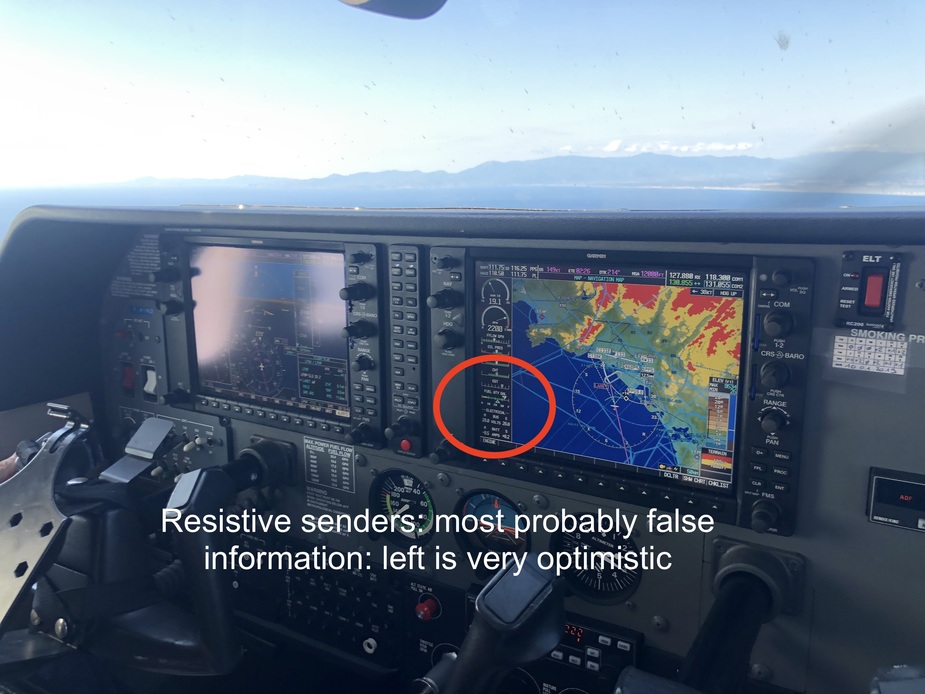
In the end, nothing terrible, but not neat. Renting pilots would complain about it, and they were right to. For information, Cessna installed capacitive senders with CAN bus from 2007. They are said to be much better, but I have heard of some problems with them, and replacement part cost is rocket high.
Capacitive senders cannot be retrofitted.
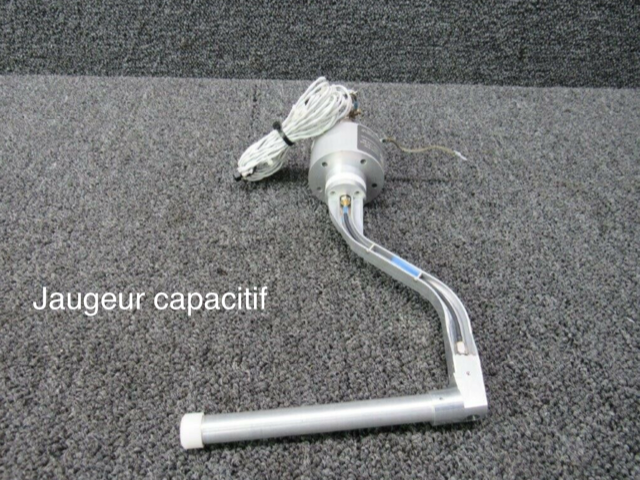
Here comes a « new » player, CIES Corp.
They have developped a new technology of fuel sender. The main point is that there is no contact between the arm / float segment, and the electronic unit. The arm position is determined magnetically,“without contact”, just as your magnetometer can detect your heading.
This brings two (big) advantages :
Second point, they have a same factor replacement unit for my Rochester senders, which can be factory configured to talk to the G1000.
Last, CIES has done a lot of work to provide AML STC. First in the FAA world, then EASA, which would make the paperwork straightforward on my F-reg aircraft.
I monitored their progress, and finally passed my order, as my resistive senders were getting tired. Both senders, configured for G1000 and with STC, came for around 1000$… Slightly less than a single new Rochester from Cessna.
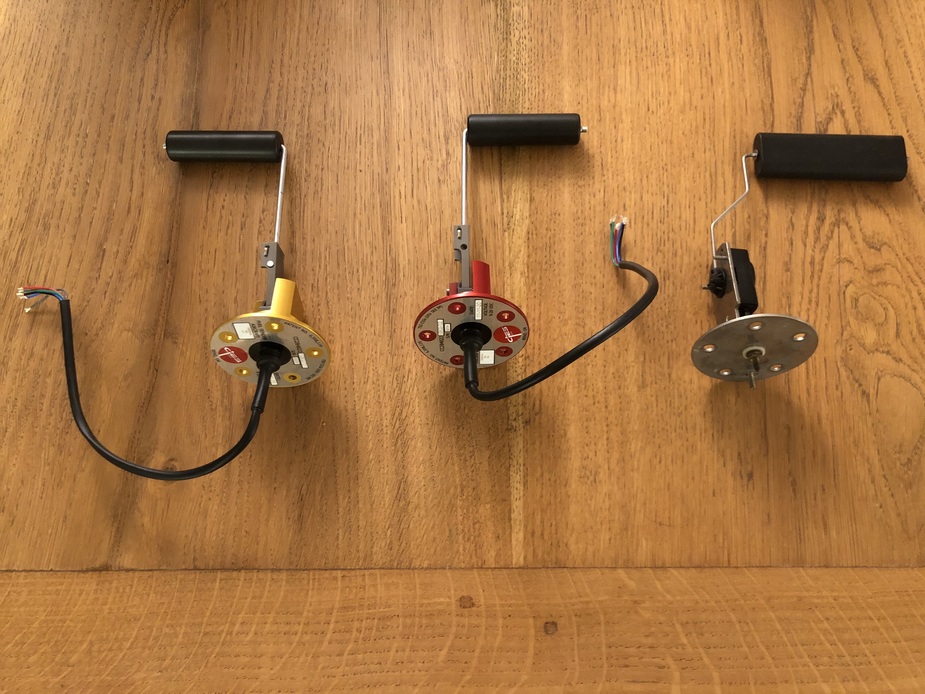
Installation was performed by my mechanics. The senders are exact replacement of the original ones, so no difficulties to place them in the tanks hole. CIES Senders need current to work, and we had to wire them into the electric panel. The choice was made to put a breaker (1 AMP) in the X-FEED BUS, which means they are powered by the main battery. If I loose the main and switch to the stand-by battery, I would loose fuel level. No big deal.
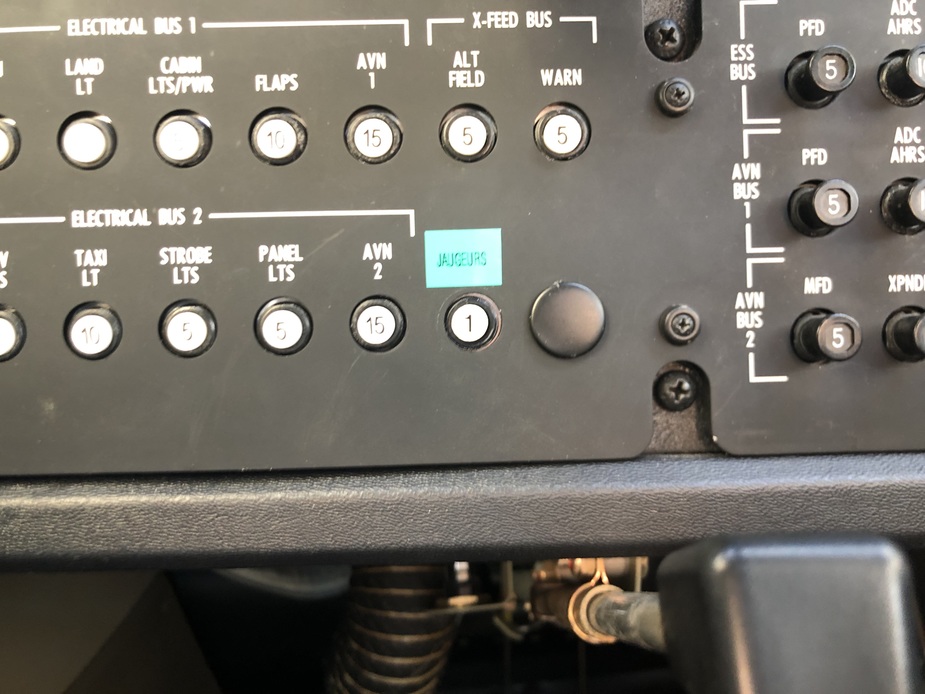
The trickiest part is the calibration, and I thought I would share this with you.
In the case of older G1000, fuel senders are calibrated with a single point : the Zero Fuel level (empty tanks + unusable fuel which 2.5USG per side). Then, the G1000 uses a law (linear) to convert a raw value into a calibrated volume (“Calibrated Total” in USG). The law obviously depends on the initial calibration as you will see.
Cessna provides a procedure to perform the calibration. The most important point is that you must set the aircraft wings leveled, and attitude pitched up to 2 degrees. The last part was not considered when we did the first try, as the mechanics thought the aircraft had to be in level flight attitude (zero pitch). That seems to be a widespread belief, and it is wrong. Do it 2 degrees up !
So what did happen ? When leveled to 0° pitch, the senders would measure a higher raw value. When you hit the calibrate button in those conditions, the law takes into account this higher value as an OFFSET. To compensate, it increases the slope factor. In real life, you end in the bottom part of your tank, with lower than real fuel level reading. Not dangerous, but a shame with such precise intruments.
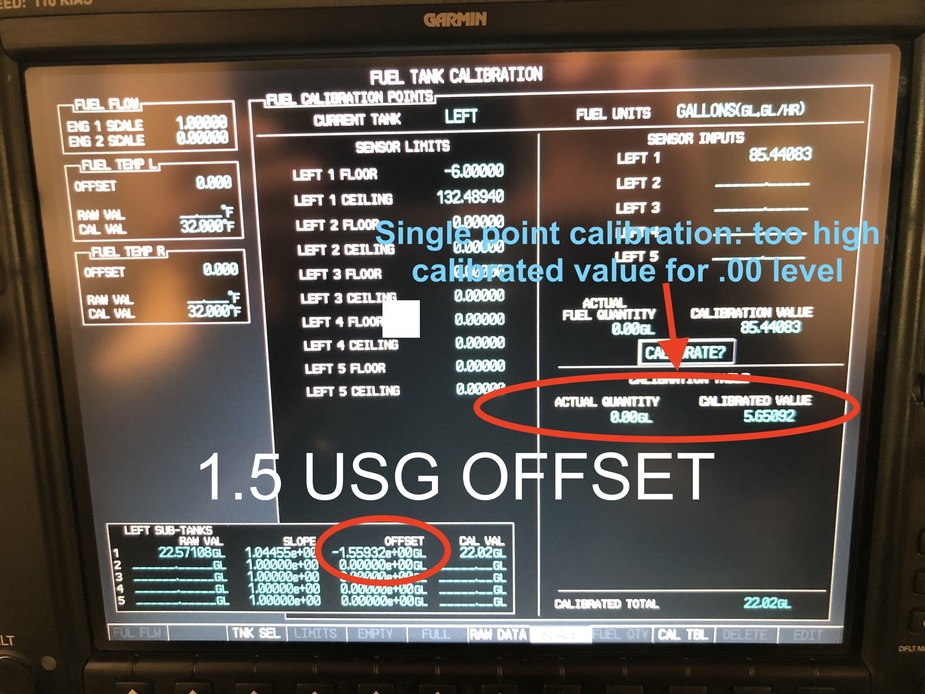
So I di dit all again. I placed the aircraft wings leveled and pitch 2° up. When I hit the calibration button, my OFFSET was almost null. The slope was adjusted accordingly (it is calculated and fixed, I can’t do anything with it). The result significantly better.
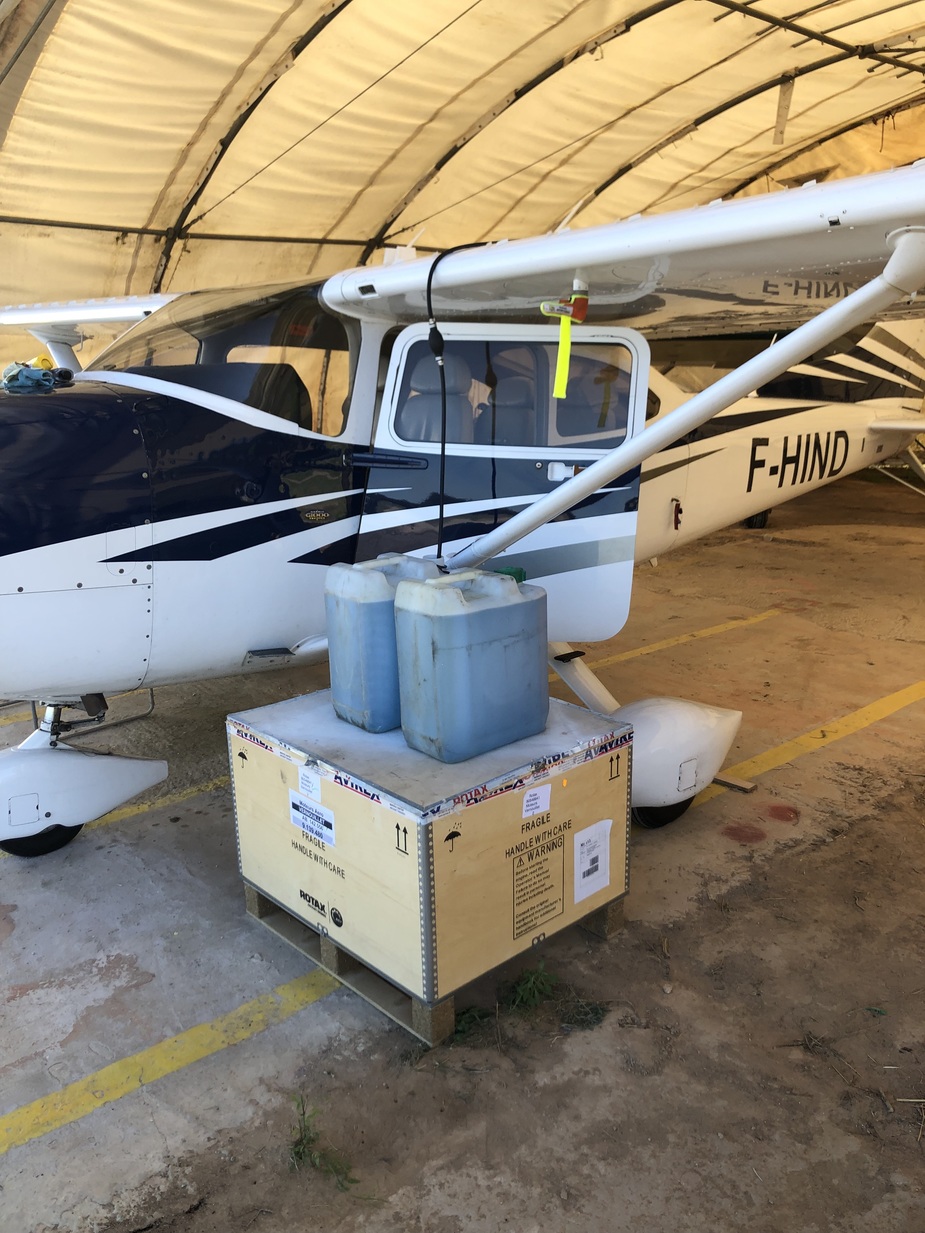
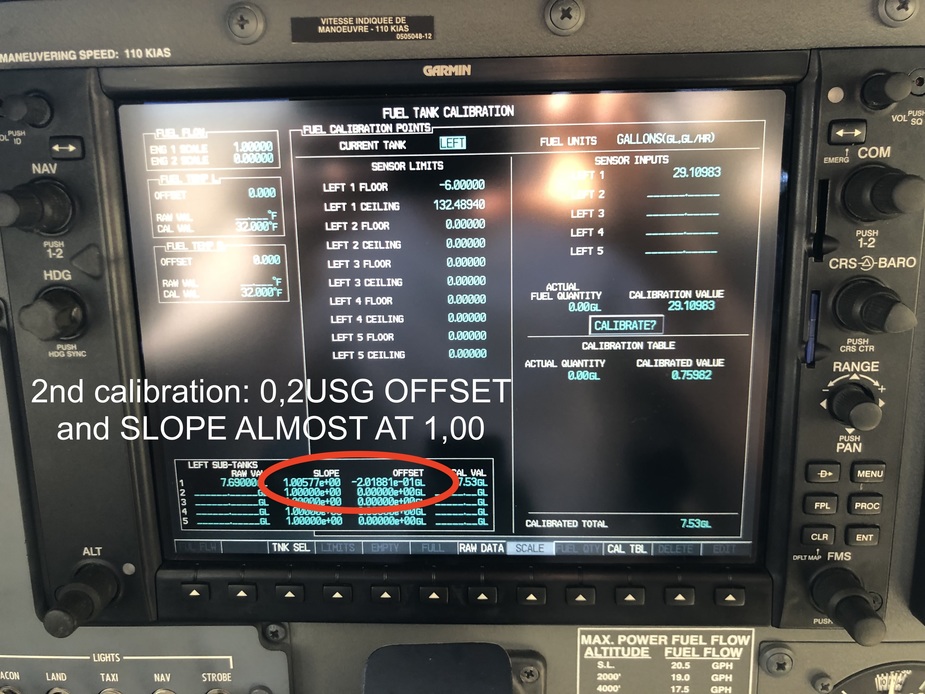
After few months of flying with them, I’m really pleased.
The information is rock steady, I’ve never seen red crosses again.
The precision (compared to FuelHawk manual fuel gauge – you know the transparent tube) is excellent. My impression is that fuel level is slighly underestimated above 30USG, and then matches reality. It may be related to the tank’s geometry. To be honnest, I can’t remind what did the previous senders, as I didn’t consider them reliable enough to study them so precisely.
No regret on this one !
Well done and nicely documented.
What was the overall spend on this „project“?
Not only the newer Cessnas suffer from degradation of these capacitative fuel senders, the older Cirrus aircraft do too.
Usually, the tolerance of owners with these inaccurate fuel gauges is a little higher when additionally they have a fuel totalizer. Does your aircraft not have a fuel totalizer? Don‘t all G1000 aircraft have a fuel totalizer?
Anyway, well done and CIES will likely be the way to go for myself as well at some point.
The installation was performed during the annual.
The roof lining had to be opened for inspection anyway, so replacing the senders took little time. Then electricity, not terrible as the electric panel is well done by Cessna, easily removed, and we found a free seat for the breaker. The first calibration was billed 4h of man power. The second was only supervised as i did the work, so 1h. Small components (connectors, breaker, wire) was under 50€.
So. 1000$ for the senders plus VAT and customs (didn’t find a way yet to have aircraft components exempted for customs). Around 10h MP @ 60€ + VAT. And miscellaneous parts. We were under 2k€ all included. I had planned 2.5k€, but it turned to be easier than expected.
I do have a fuel totalizer which is very accurate. All the more accurate you know how to fill completely your tanks: it’s easy to let 5USG of air while you think they are full, and tell the totalizer you have 87 gallons on board.
I rent my aircraft to a small number of pilot, and some complained about the fuel gauge. That was a further motivation to perform the upgrade. One of my customer even participated. Not only it alleviated the cost for me, it also proved how good it can be not to be alone when taking care of an aircraft :-)
PS: i didn’t know Cirrus used capacitive senders. As for Cessna, I don’t know if newer equipped with capacitive and CAN BUS can go with CIES. We would need to ask Scott Philiben.
Just to get your eyes trained.
Below are screenshot for L and R tanks with:
- new senders installed
- old calibration law (factory)
- before adding the unusable fuel
In that situation, the gauges (« Calibrated Total », bottom right corner) should read negative value. What you want is to read 0.00 USG after:
- adding 2.5 USG on each side
- putting the aircraft wings leveled and 2 degrees up
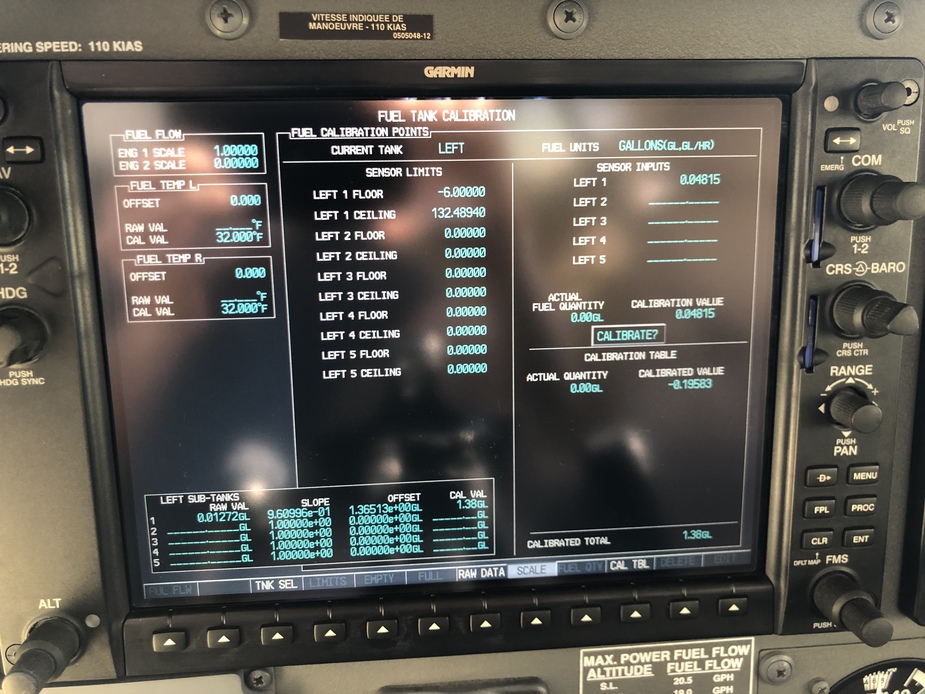
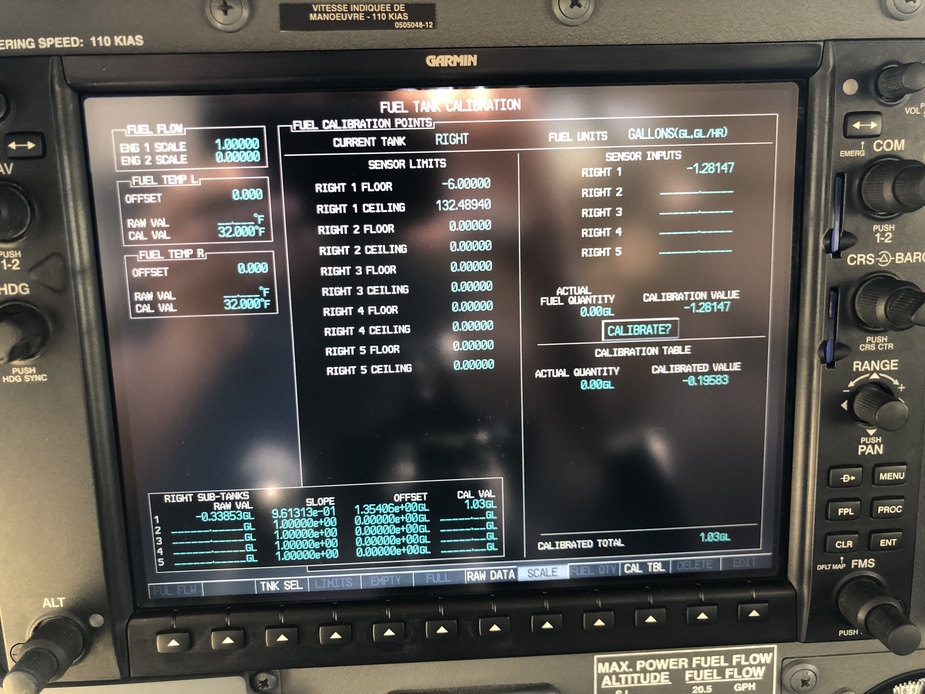
This is 1st calibration, just after hitting the « CALIBRATE ? » button. You see that:
- a new value is taken into account in the Calibration Table. And that the « Calibrated Total » is now 0.00.
The problem is that the aircraft was leveled (not 2 degrees up !) and the sensor input at the time was 5.64 (too high reading in that attitude). This lead to high offset of « -1.55 ».
My guess is that sensor input reads « raw liters » and then the offset is converted into USG.
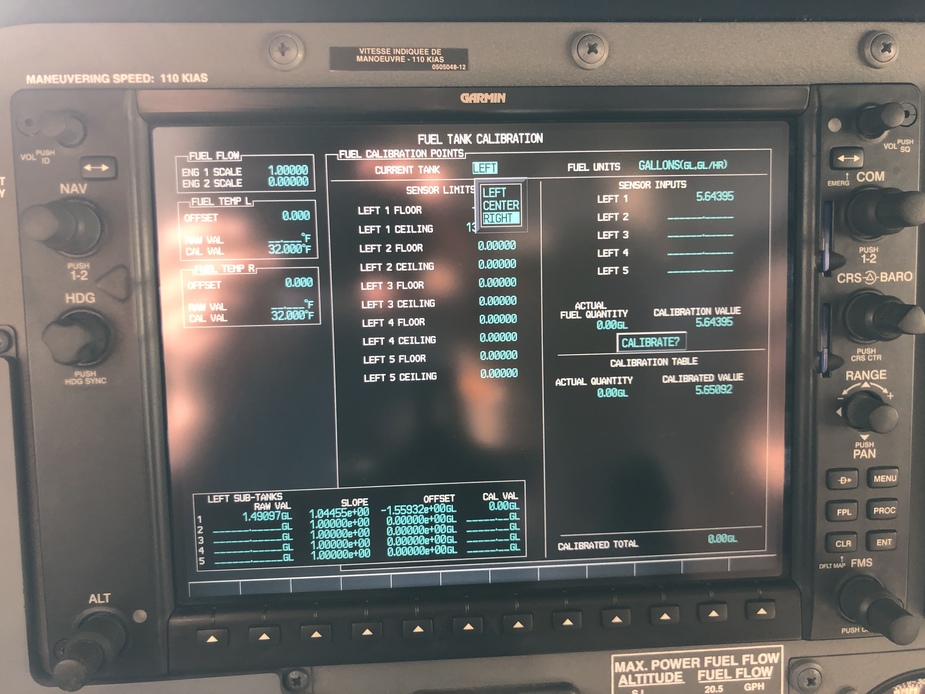
Thanks. I understand that the upgrade in the Cirrus is a lot more expensive than that. 1) because there is more labour and hardware involved and 2) the upgrade also means getting a new (digital) fuel gauge.
Any owners of early Cirrus aircraft here which have already done it?
The value of legacy G1000 is underestimated.
They are an excellent upgradable platform 
Very informative post.
I’ve always baulked at the price of this upgrade and have just refitted with after market Mccauley like for like replacements.
Nice – thanks for the report 
Great report. Can fully support the conclusion on the value of CIES senders.
Just two additions from own experience:
- If the plane is on wheels and not on stands, one has to keep in mind that attitude might change easily by 1-2° when somebody crawls into the cockpit. Therefore make sure when to measure the 2° pitch up attitude. (Would have saved my at least one try to calibrate)
- Calculating the fuel volume from fuel level in a tank that is large but flat is mathematically simple, but physically still difficult/error prone. Depending on the geometry of the tank/wing there are often some fuel volumes that only make a very small difference in fuel level at the location of the sender. Therefore not only my but many other CIES installations I know have some quantities where the fuel amount is still 1-2l off even though the sender works perfectly fine. They can’t do magic.
Therefore my conclusion is: Esp. if frequently flying towards max range I would not say that CIES senders can replace a (flow based) fuel computer – but it is a great additional level of redundancy (and with many years of experience with the traditional fuel gauges it is really surprising that such devices can actually show the same values as the fuel computer ;-)